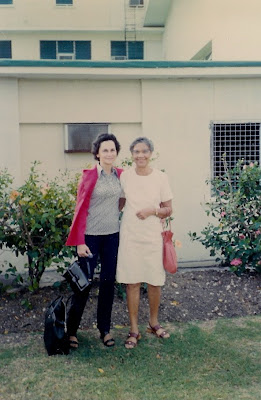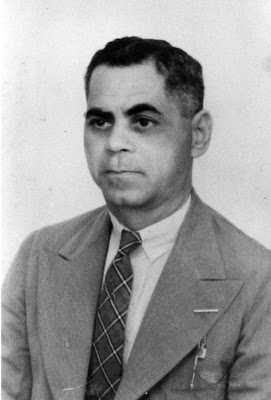EDWARD ARCHER
Born about 1694
Married Elizabeth Bullen 1715
Will 1771
Was supposed to have had 25 children
* possibly more than one wife
* possibly a missing generation as records are inconclusive
KNOWN DESCENDANTS OF EDWARD ARCHER (b. 1694)
- JAMES ARCHER (eldest)
Born about 1716
Married Christian Sherren Feb. 21, 1754 in Barbados
Died in 1764, will recorded in 1769 in Jamaica
Settled in Jamaica about 1753 - EDWARD
Born about 1718
Went to Jamaica with James and eventually owned Sion Hill & Pilgrim Estates in Jamaica - WILLIAM
Born about 1720
Married Sarah Barker in St. Peter in 1761
NOTE: There is also a William Archer who married a Sarah BUTLER on March 22, 1764 at St. Michael (familysearch.org)
Will recorded Jan. 22, 1778 - LOVE
Born about 1734
Married Henry Walcott May 31, 1753
Son, Cormichell John Walcott b. Mar. 16, 1754, bap. Oct. 3, 1754, St. Lucy
Buried Dec. 14, 1789 St. Lucy, Church of England
- ANTHONY
Born about 1746 (Other research suggest earlier date); parochial records not available before 1746; possible missing generation
Married Mary Hollingsworth Jan. 18, 1776
Buried Dec. 8, 1795 (will) of Cluffs Estate, St. Lucy - JOHN, Senior
Born about 1760
Married Jane Edwards May 31, 1781
Deed recorded 1814
Buried Sept. 27, 1818 St. Lucy
- HOLLINGSWORTH ANN
Born Oct. 11, 1778
Died before father’s will was written - EDWARD
Born June 12, 1780
Baptized Aug. 13, 1780 St. Lucy
Married Elizabeth Griffith Yearwood on July 16, 1801
Abode: Cluffs
Killed in storm, Buried June 11, 1832 - BENJAMIN
Born March 4, 1782
Baptized Oct. 9, 1784 - ANTHONY
Born May 3, 1784
Died Oct. 30, 1840 - WILLIAM
Born July 17, 1786
Married Johanna Seale in 1809 (Bur. Oct. 25, 1820)
Buried March 27, 1821 in St. Lucy
Will recorded Apr. 9, 1821; lists home in Speightstown - JOHN HOLLINGSWORTH
Born about 1778
Married Mary Ann Lampaine in Christ Church on July 20, 1799
Buried Aug 21, 1821 in St. Lucy
Will 1821; no children
KNOWN DESCENDANTS OF WILLIAM ARCHER (b. 1786)
- EMILINE
Born Oct. 5, 1810
Baptized Jan. 15, 1812 in St. Lucy
Married Yearwood - WILLIAM P. Senior "The Elder"
Born May 18, 1812
Baptized Feb. 18, 1817 in St. Lucy (with siblings Anthony, Mary Seale, John Seale)
Married Mary Elizabeth Lawton in St. Peter on Sept. 20, 1838
Buried June 5, 1862, merchant of Speightstown & member of Masonic Order
Will recorded July 11, 1862; he was indebted to the Hon. Phillip Lytcott Hinds of England who had been his principal investor in business. - ANTHONY
Born Feb. 24, 1815
Baptized Feb. 18, 1817 in St. Lucy (with siblings William P, Mary Seale, John Seale)
Buried Aug. 12, 1817, St. Lucy (infant) - MARY SEALE
Born July 31, 1816
Baptized Feb. 18, 1817 in St. Lucy (with siblings William P, Anthony, John Seale)
Buried Aug. 18, 1817, St. Lucy (infant) - JOHN SEALE
Born Feb. 13, 1817
Baptized Feb. 18, 1817 in St. Lucy (with siblings William P, Anthony, Mary Seale)
Married Jane King Mullynix in St. Michael on Jan. 21, 1845; may have had one son, John, who remained unmarried
Buried Sept. 11, 1851 St. Peter; (alt. bur. July 3, 1868)
- LYTCOTT HINDS
Baptized July 9, 1839 in St. Peter
Buried Apr. 20, 1896, Westbury Cemetery, St. Michael
Moved to St. Kitts, no children - ALLEYNE SMITH
Born 1841
Baptized July 13, 1841
Married Edwardina Maria Curll (alt. surname Crawford) in St. Peter on July 27, 1864
Occupation Accountant; Had 4 children; Moved to Antigua; died in Antigua
Death unknown - ANTHONY FREDERICK
Born
Baptized Aug. 20, 1846 in St. Peter
Moved to Antigua Buried Aug. 29, 1899 (unknown) aged 52 - LAWTON
Born
Baptized Feb. 9, 1843 in St. Peter
Died May 1895 St. Michael
Buried May 13, 1895 Westbury Cemetery, St. Michael
Moved to St. Kitts; no children - FRANCIS BONFIELD
Born Nov. 5, 1848
Baptized Dec. 23, 1848
Married Sarah Anne Alleyne Dec. 7, 1876 Bridgetown
Died Sept. 20, 1901 . Kensington, Greater London, UK
Buried Kensal Green Cemetery
Occupation Physician & Surgeon, Died in England while on business - GEORGE STRATTON ROLLINS
Born Nov. 16, 1850 Barbados
Baptized Jan. 15, 1851 in St. Peter
Married Elizabeth Jesse Thorne Barker (Vessie)
Died July 4, 1928 St. Michael
Buried Westbury Cemetery, St. Michael - ELIZABETH GRAZETTE or Grasette
Born
Baptized Oct. 23, 1844 in St. Peter
Visited Lancashire, England 1871 (poss.) per Census 10 months
Married Nov. 1, 1877 in St. Michael to William Everard (seaman)
Had 3 children; died while traveling on a ship
Buried Westbury Cemetery, St. Michael
- GEORGE LAWTON
Born Dec. 3, 1887
Baptized Jan. 25, 1888
Emigrated to U.S.A. Aug. 1907;
WW1 Draft registration June 5, 1917; single; eyes blue, hair fair, tall, slender; previous military experience as a Private in Barbados Infantry; occupation Clerk
Passport application Aug. 21, 1919
Occupation Druggist; Resided in Brooklyn, NY - ERNEST
Born Jan. 3, 1889
Baptized
Emigrated to U.S.A.; married
Died Jan. 6, 1913 in Brooklyn, Kings, New York, age 24
Buried Jan. 8, 1913 in Evergreen Cemetery, New York - EVERETT PIERSON
Born July 13, 1893
Baptized Aug. 23, 1893 St. Michael, Barbados
Married Winnifred Elise Jordan in 1920, New York
Died Dec. 22, 1973 in Barbados
Buried in Westbury Cemetery, St. Michael - ERCELL
Born Nov. 23, 1898 Barbados
Died Aug. 26, 1995 Barbados - THELMA CLARISSA
Born Mar. 28, 1902 Barbados
Married Robert Barnes
Died July 7, 1996 in Florida, U.S.A. - PAULINE DEVERE
Born Feb. 28, 1908
Married Clement De Freitas
Visited U.S. July 17, 1938
Died Dec. 29, 1992 in Florida, U.S.A. - INA LUCILLE
Born Dec. 1, 1896 St. Michael, Barbados
Married Frederick Sorensen
Died April, 1980 in New York, U.S.A. - BERYL KATHLEEN BARKER
Born
Died (infant)


















































